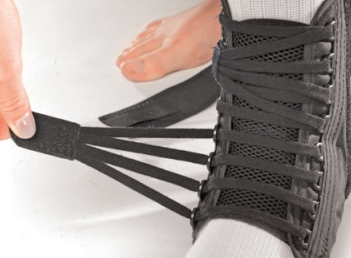Ankle instability is a common, ongoing malady for many athletes. It mostly affects people who run or play sports, but it can also affect those who hike or climb.
Ankle instability is most commonly caused by weak muscles and tendons called the plantar fascia. When this ligament is overstretched, it creates a feeling of instability (the ankle doesn’t feel quite right). This sensation may trigger an urge to land on your outside forefoot and change direction — which can easily lead to sprained ankles, rolled ankles, broken ankles and more.
Suffice it to say: If you run or play sports regularly, you want to keep an eye out for ankle instability. Here’s what you should know about this pesky problem and how to fix it before it gets worse.
What is ankle instability?
Ankle instability is a common, ongoing malady for many athletes. It mostly affects people who run or play sports, but it can also affect those who hike or climb.
Ankle instability is most commonly caused by weak muscles and tendons called the plantar fascia. When this ligament is overstretched, it creates a feeling of instability (the ankle doesn’t feel quite right). This sensation may trigger an urge to land on your outside forefoot and change direction — which can easily lead to sprained ankles, rolled ankles, broken ankles and more.
Suffice it to say: If you run or play sports regularly, you want to keep an eye out for ankle instability. Here’s what you should know about this pesky problem and how to fix it before it gets worse.
How to prevent ankle instability
Ankle instability can happen to anyone, but there are some simple ways to prevent it that can make a big difference.
The most basic step is to strengthen your muscles and tendons. If you’re not used to exercising, this might be difficult. But it’s worth the time and effort because it will help keep your ankles in good shape and decrease your chances of suffering from ankle instability.
Another key thing to do is stretch before and after playing sports or running. This may sound like an obvious tip, but many people neglect this step. The best time to stretch is at the end of a workout or run when your muscles are warm and flexible. A light stretch for about five minutes after a run or soccer match also helps reduce soreness and stiffness around the ankle joint (which makes avoiding injury easier).
Finally, change up your shoes on a regular basis. A new pair of shoes can help prevent ankle instability by correcting poor biomechanics (such as having too much weight on the outside foot).
Common causes of ankle instability
Ankle instability is often caused by factors like weak plantar fascia, inadequate muscle strength (especially in the calf) or the misalignment of the talus bone.
The first step to fixing this problem is seeing a doctor or physical therapist to get a diagnosis and treatment plan. A doctor or therapist can help you determine what’s causing your ankle instability and put together a plan to fix it.
If you have pain or swelling in your ankle that doesn’t go away with rest, but you also have difficulty breathing, these are some signs that your plantar fascia may be overstretched. If this is the case, consider seeing a doctor for an x-ray before continuing with exercise.
Symptoms of ankle instability
Symptoms of ankle instability can vary, but most often come with an achy feeling in the outside of your foot and some swelling. The most common symptoms are:
• A sharp pain that shoots from the outside of your foot toward your heel
• Achiness that never goes away
• Soreness or stiffness that extends beyond the joint itself
• Tingling, numbness or lack of power in the foot
At the first sign of any of these symptoms, it’s important to stop what you’re doing and rest. If you don’t have time for a break and feel like you need to keep moving, simply lean your foot on a chair or walk gingerly for a short distance.
Treatment for ankle instability
The first step to treating ankle instability is identifying that you have it. If you suspect the problem, the best thing to do is get professional help right away.
If you have self-diagnosed the problem and don’t need immediate treatment, do these exercises daily:
1. Ankle circles (ball of foot on ground)
2. Ankle rotations (turn your foot up so that your toes are pointing up)
3. Straight-leg lifts (place your weight on one leg, bending at the knee while keeping the other straight)
4. Heel raises (stand on one leg and raise up onto your toes with your heel)
5. Standing quadriceps stretch (stand with one leg in front of you and bend your knee.) Use a support if needed for balance
Prolonged recovery will help re-strengthen your tissues
If you’ve been dealing with ankle instability for a while, your tendons and muscles will be weakened. The good news is that working on restoring your strength and mobility will help lessen symptoms associated with this condition.
First, it’s important to rest the area. Resting should typically last at least seven to 10 days.
Second, you should strengthen your muscles by doing yoga poses or other exercises that engage the muscles in the back of your leg (the quadriceps). You can also try foam rolling to break up scar tissue and increase blood flow.
Conclusion
Ankle instability is an issue that affects many athletes and people who perform repetitive movements on their feet. Prolonged ankle instability can lead to a permanent disability.
If you have had ankle instability in the past, you should know what to look for and what to do if you suspect you are developing the condition. In the meantime, focus on prevention and take care of your body.

